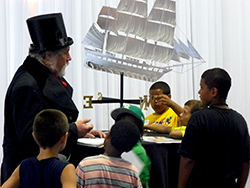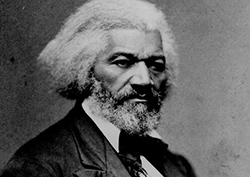VARIOUS TOPICS
| Forum: Just sharing stuff..... | |||||
|
|||||
|
Dave Medeiros
 Joined: 12/05/09 Posts: 133 View Profile |
New Bedford is Rich in History Posted Saturday, February 16, 2019 09:10 PM NEW BEDFORD IS RICH INHISTORYNew Bedford is home to the New Bedford Whaling National Historical Park, with stories from whaling, the textile industry, the working waterfront and the Underground Railroad. These stories are filled with people who are as fascinating as Melville’s fictional Captain Ahab who battled Moby Dick; and include Frederick Douglass who found his freedom and his voice in New Bedford, the activist Paul Cuffee, the great American artists Albert Bierstadt, William Bradford and Albert Pinkham Ryder and all the immigrants who labored in the textile mills and waterfront to build a life for their families. New Bedford is the destination for history and culture.
Whaling
In the 19th Century New Bedford gained worldwide reputation as the greatest whaling port and the richest city per capita in the world. Portuguese and Cape Verdean immigrants formed the backbone of the whaling industry, on the wharves and on the high seas. Herman Melville shipped out aboard the whale ship, Acushnet, in 1841. His experiences inspired him to write “Moby-Dick”.
Textile IndustryNew Bedford’s first mill for the manufacture of cotton cloth was opened in 1846. After the turn of the century New Bedford became one of the largest producers of cotton yarns and textiles in the country, and led all centers in quality and quantity output of fine goods. Around 1920, at the height of prosperity, there were twenty-eight cotton establishments, operating seventy mills and employing 41,380 workers. The mills attracted immigrant populations from countries included but not limited to Poland, French Canada and Portugal.
The Underground Railroad and Frederick Douglass
Some Notable residents of New Bedford:James Arnold: Whaling merchant, whose estate is now known as the Wamsutta Club in New Bedford. Donated his fortune to create the Arnold Arboretum in Boston. Clifford Warren Ashley: Author, sailor, and artist, most famous for “The Ashley Book of Knots”, an encyclopedic reference manual, copiously illustrated, on the tying of thousands of knots. He invented Ashley’s stopper knot. Albert Bierstadt: 19th century German-born artist whose depictions of the American West were well known throughout the country. Paul Cuffee: merchant, and philanthropist and civil rights activist. William Greenleaf Eliot: Co-founder and benefactor of Washington University of St. Louis. Grandfather of T. S. Eliot. Henrietta Howland “Hetty” Green: the “Witch of Wall Street”, was the wealthiest woman in the world. Henry Grinnell: Successful businessman who financed the outfitting of two vessels, the Advance and the Rescue, to search the Arctic for the lost Franklin Expedition. Captain Henry M. Robert: Wrote Robert’s Rules of Order in New Bedford, the standard rules for conducting meetings. Benjamin Russell: Artist best known for his accurate watercolors of whaling ships. Albert Pinkham Ryder: 19th century painter best known for his poetic and moody allegorical works and seascapes, as well as his eccentric personality. |
||||
|
|||||



 In the days of anti-slavery agitation, the people of New Bedford showed a practical sympathy for fugitive slaves. The town was noted as one of the major “stations” of the “Underground Railroad,” which was not a railroad at all, but merely an undercover system, to provide refuge for fugitives. The most famous fugitive to settle in New Bedford was
In the days of anti-slavery agitation, the people of New Bedford showed a practical sympathy for fugitive slaves. The town was noted as one of the major “stations” of the “Underground Railroad,” which was not a railroad at all, but merely an undercover system, to provide refuge for fugitives. The most famous fugitive to settle in New Bedford was